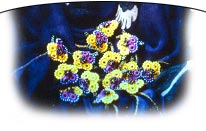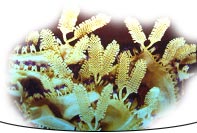Edging Embroidery
Popular Culture
KNITTING
Edging Embroidery
Turkish Embroidery
Handicrafts have been around since the first human beings, depending on the
prevailing natural conditions. The first examples came about as a result of
meeting clothing and protection needs. Later, these crafts developed and changed
in line with environmental conditions and took on “traditional” characteristics
by reflecting the feelings, artistic approval and cultural characteristics of
the society concerned.
 Handicrafts
represent and promote a nation’s culture. They are thus the living specimens of
the cultural identity of that country. They play a role in transferring and
progressively continuing the customs, traditions and lifestyle of a country from
one generation to the next. For this reason, all countries attach importance to
their handicrafts and protect them as a cultural heritage from the past to
future.
Handicrafts
represent and promote a nation’s culture. They are thus the living specimens of
the cultural identity of that country. They play a role in transferring and
progressively continuing the customs, traditions and lifestyle of a country from
one generation to the next. For this reason, all countries attach importance to
their handicrafts and protect them as a cultural heritage from the past to
future.
Anatolia is an important cradle of civilization, where many handicrafts were
made and introduced to the world, in terms of the variety and quantity of those
crafts.
Handcrafts reflect the taste, aesthetics, emotions, tolerance and practical
nature of Turkish people. The best-known examples of traditional handicrafts,
such as rugs, socks, embroidery, ornaments etc. come from the very heart of the
Turkish people, and are documents in which the incredible beauty of art is laid
out.
 Oya
(edging embroidery) is one of the most elegant examples of Turkish handicrafts
and has been described as: "thin lacework” or “decorative silk or thread knitted
and fringed onto women’s clothes (outdoor slippers etc.) by needle-work or else
by sewing on ready-made ones.”
Oya
(edging embroidery) is one of the most elegant examples of Turkish handicrafts
and has been described as: "thin lacework” or “decorative silk or thread knitted
and fringed onto women’s clothes (outdoor slippers etc.) by needle-work or else
by sewing on ready-made ones.”
“Oya is the name of ornamentation knitted by a colored thread in the shape of
a leaf or flower,” “Oya is a kind of lacework. It is characteristic of Türkiye.
Normal lacework has two dimensions, however, whereas oya can be knitted in
three. It is placed on the sides of the fabric as a decoration,” “Oya is an art
that involves knitting techniques with the aim of embellishment and decoration.”
One might also describe oya as a handicraft made by tools such as needles,
weaver’s shuttles, awls and hair-pins and by using auxiliary objects such as
silk, cotton, spangles and beads.
Oya, which is also known as, Turkish lacework became popular in Europe in the
16th century. It entered the French Academy Dictionary under the name of
lacework in 1594,
 and
is known in some Western languages by the same name. Research into the first
appearance of lacework in Europe and its origins has shown that some knitting
names were used in Aegean fairy-tales. It has been established from the examples
found in the carvings in Menfiz in 1905 that the history of this art goes back
some 2,000 years before Christ. In some sources it is stated that needlework was
brought to Greece from Anatolia in the 12th century and passed on to Europe by
way of Italy. Not enough research into oya has yet been carried out. No other
similar technique exists, nor any word similar to ‘oya’ in either Eastern or
Western languages
and
is known in some Western languages by the same name. Research into the first
appearance of lacework in Europe and its origins has shown that some knitting
names were used in Aegean fairy-tales. It has been established from the examples
found in the carvings in Menfiz in 1905 that the history of this art goes back
some 2,000 years before Christ. In some sources it is stated that needlework was
brought to Greece from Anatolia in the 12th century and passed on to Europe by
way of Italy. Not enough research into oya has yet been carried out. No other
similar technique exists, nor any word similar to ‘oya’ in either Eastern or
Western languages
Anatolian women reflect their emotions in colours and oya. Turkish oya varies
from region to region, as do the names employed for it.
Today in Anatolia, the oya-work designed as a contour or as an artistic
design that is applied with tools such as awls, needles, weaver’s shuttles and
hair-pins has different names depending on the tool and the technique used: